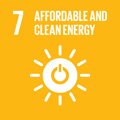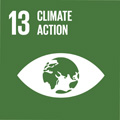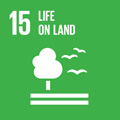- Docente: Claudio Antonio Tranne
- Credits: 6
- SSD: GEO/08
- Language: Italian
- Teaching Mode: Traditional lectures
- Campus: Bologna
- Corso: Second cycle degree programme (LM) in Geology and Territory (cod. 9073)
Learning outcomes
Students will acquire a preparation that will allow them to understand the main eruptive phenomena (lava flows, explosive eruptions, volcano-tectonic collapses, lahar), in order to obtain the physical/ mathematical parameters (dynamic pressure, critical mass load, etc. ..) necessary to define the impact of eruptions on a territory. At the same time, they will acquire knowledge about the main monitoring systems and the use of data obtained for short (prediction) or long (forecasting) predictive actions, which can be used for risk mitigation assessment. Moreover, it will be provided to the students the necessary knowledge to assess and enhance major resources in volcanic areas, both from a cultural and economical point of view.
Course contents
The course is structured into five parts. The first aimed, in a synthetic way, to give a cognitive framework of the eruptive activity and its geodynamic context, starting from the conditions that determine its development, from the magmatic source areas to the surface manifestations, also defining the main depositional mechanisms.
The second to define the impact of volcanic phenomena on the territory and on the society by introducing the concepts of hazard, risk and volcanic disaster.
The third part (“Anticipating volcanic eruptions”) represents the focus of the course and aims to define and illustrate through Physical Volcanology and Monitoring, the methodologies useful to: 1) reconstruct the tectonic/stratigraphic evolution of a volcanic area and to define the physical/mathematical parameters of the eruptions through the detailed analysis of the characteristics of the deposits of the eruptions themselves; 2) to illustrate the main monitoring systems used to characterize the different states of an active volcano (unrest phases alternated with quiescent phases); 4) the systematic development and application of policies, strategies and practices to minimise vulnerabilities and disaster risks throughout a society, to avoid (prevention) or to limit (mitigation and preparedness) adverse impact of hazards, within the broad context of sustainable development.
The fourth part is addressed to the knowledge of the main high-risk areas in Italy (Vesuvio, Phlegraean Fields, Etna, Aeolian Islands) and in the world (Mexico City, Auckland, etc.).
The fifth and last part is aimed at illustrating, evaluating and enhancing resources in volcanic areas, both from a cultural and economic point of view, highlighting in particular the importance of the extraction context (preventive geological surveys), of the ways of using geothermal energy (direct and indirect use) and of the different power plants. The course will be completed by an excursion to Vesuvio and Phlegraean Fields, with a visit to the monitoring center of the Osservatorio Vesuviano (INGV), or, alternatively, to the geothermal power plants of Larderello.
I - OWERVIEW
The "volcano" system: classification and dynamics of volcanic eruptions
II - VOLCANIC RISK
Introduction
II.1. Volcanic Risk
II.2. Volcanic hazards
II.3. Vulnerability of a volcanic area
II.4. From risk to disaster
II.5. Volcanic Risk Coefficient (VRC)
III - ANTICIPATE VOLCANIC ERUPTIONS
Field and laboratory studies of volcanic deposits and evaluation of the impact of eruptions on the territory through the definition of the main eruptive physical/mathematical parameters of the eruptions. Meaning of volcanic monitoring. Forecasting and prediction of volcanic eruptions and actions for risk reduction and mitigation.
III.1. PHYSICAL VOLCANOLOGY
Introduction
III.1.1 Dangerousness of deposits from falling (fall) and pyroclastic density currents (PDC): methods for calculating eruption parameters, methods for calculating critical mass loads; speed assessment and methods for calculating dynamic pressure;
III.1.2. Lava casting hazards: main features, rheology, spatial impact and mitigation;
III.1.3. Calcium Hazard
III.1.4. Sector collapse hazard: debris avalanche, volcanogenic tusnamis, etc.
III.1.5. Dangers from lahar and jokulhlaup;
III.1.6. Laboratory studies
Experimental and theoretical models.
III.2. VOLCANIC MONITORING
The main objective of the monitoring of active volcanoes is to identify and measure phenomena induced by the movement of magma in depth, and which may represent the precursors of an eruptive activity. The scientific community promotes and implements research programs to study the precursor phenomena of eruptions and develops geophysical and geochemical instrumental networks, to measure the phenomena occurring in volcanic areas during quiescent and unrest phases.
Introduction
III.2.1. Geodetic and geophysical monitoring
III.2.2. Geochemical monitoring
III.2.3. Overall effects of eruptions
III.3. FORECASTING VOLCANIC ERUPTIONS
Introduction
III.3.1. Long-term forecasting
III.3.2. Short-term prediction
III.3.3. How not to manage a volcanic emergency
III.3.4. How to manage a volcanic emergency
III.4. REDUCTION OF VOLCANIC RISK
Introduction
III.4.1. How is the volcanic risk reduced?
III.4.2. Volcanic alert
III.4.3. Phlegraean Fields Spatial Information System
III.4.4. Actions aimed at reducing volcanic risk
III.4.5. Resilience to volcanic disaster
III.4.6. The 1995 eruption of Soufrier Hills (Montserrat island): a positive example of risk management
IV - HIGH-RISK VOLCANIC AREAS IN ITALY AND WORLDWIDE
Introduction
IV.1. The Campania volcanic district: Campi Flegrei, Vesuvio, Ischia and Procida
IV. 2. Etna
IV.3. The Aeolian volcanic district: Stromboli, Vulcano, Lipari
IV.4. Main areas of high volcanic risk in the world
V - RESOURCES IN VOLCANIC AREAS
Introduction
V.1. Geothermal energy.
V.2. From eruptions to constructions: volcanic geomaterials useful to man.
V.3. Volcanoes as cultural resources.
V.4. Biodiversity in volcanic soils
Readings/Bibliography
- Lecture notes.
- B. McGuire, C. R. J. Kilburn, J. Murray. Monitoring Active volcanoes. Strategies, procedures and techiniques. UCL Press, 1995.
- H.U. Schminke. Volcanism. Springer-Verlag, Berlin Heidelberg, 2004.
- J. Martì & G.G.J. Ernst. Volcanoes and the Environment. Cambridge University Press, 2005.
- S.A. Fagents, T.K.P. Gregg, R.M.C Lopes. Modelling volcanic processes. Cambridge University Press, 2013.
- H. Sigurdsson. Encyclopedia of Volcanoes. Accademic press, San Diego, U.S.A., Second edition, 2015.
- P. Papale. Volcanic hazards, risks and disasters. Elsevier, 2015.
Teaching methods
Class lessons performed by adopting up-to-date techniques in didactics (e.g. powerpoint and keynote presentations). Use of original iconographic stuff (outcrop photos) depicting volcanic structures and deposits which have been treated during the lessons on theory. The course will enjoy the occurrence of a conclusive field event when the students will examine the deposits related to the high hazard eruptions of Vesuvio and Phlegrean Fields.
Assessment methods
The test will be carried out through a multiple-choice or oral examination aimed at verifying of the student's theoretical knowledge in risk assessment and mitigation, together with the ability to correlate theoretical knowledge and field observation data.
Teaching tools
Keynote and powerpoint presentations
Links to further information
https://www.unibo.it/sitoweb/claudio.tranne/
Office hours
See the website of Claudio Antonio Tranne
SDGs




This teaching activity contributes to the achievement of the Sustainable Development Goals of the UN 2030 Agenda.
